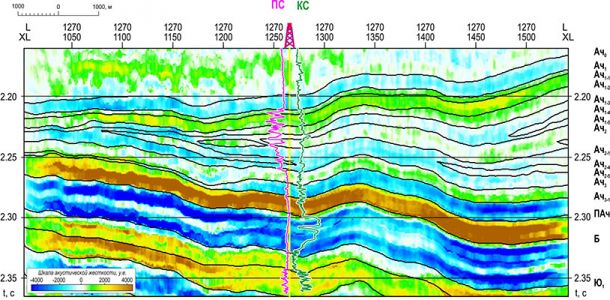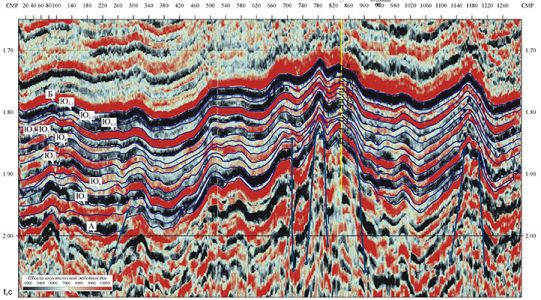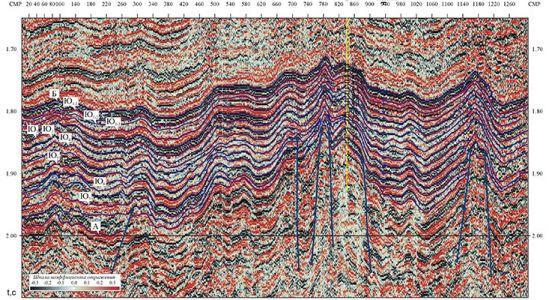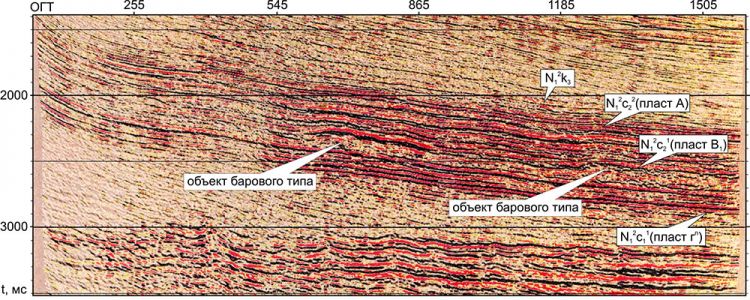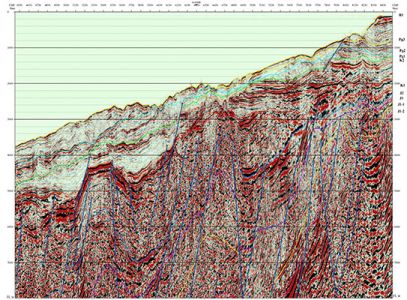Seismic data processing is implemented on a special graph that ensures the preservation of the seismic record dynamics, which contains the identifiable information about the most important geological indicators in industrial exploration (lithology, reservoir properties, and oil saturation).
In particular, in this graph the procedures that are used are the ones that allow obtaining a recoverable dynamics of seismic record that is adequate to the actual distribution of acoustic heterogeneity of the studied section.
One of the distinguishing features of the technological scheme of seismic data processing is a procedure of inversing seismic traces into the impulse response of the medium, i.e. the effective reflectivity (RC) and the effective acoustic impedance (AI) traces in order to restore an adequate model of thin-layered real geological medium. This procedure is used in both the processing of original seismograms (field) and during processing of the final migrated 2D – sections and 3D – cube seismic records.

